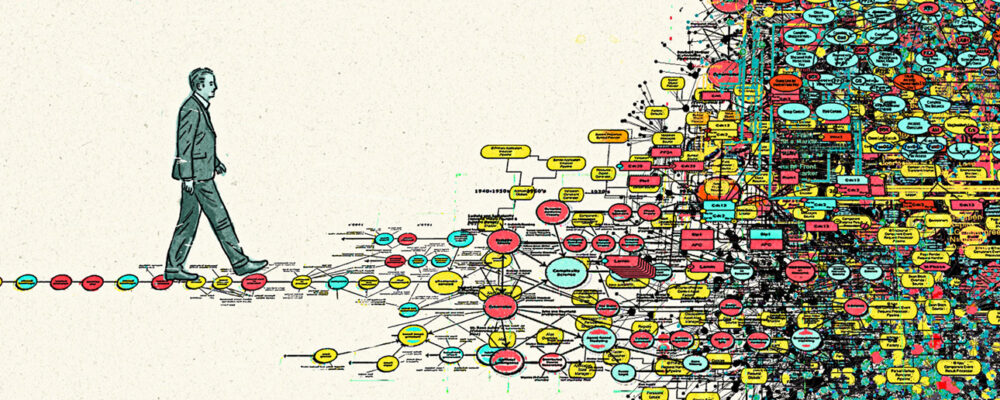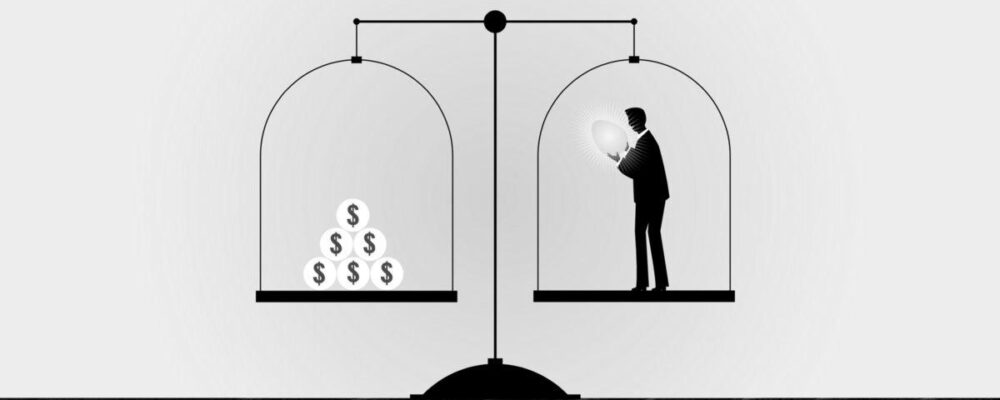Carolyn Geason-Beissel/MIT SMR | Getty Images
Many companies have yet to tap into the growing “longevity economy” — the economic value of the over-50 population as consumers and workers. Businesses often overlook this demographic even though it holds about 80% of U.S. household wealth and is responsible for half of consumer spending.1 People who are 50-plus contribute $8.3 trillion annually to the U.S. economy, and that figure is expected to grow to $12.6 trillion by 2030, according to AARP research.2 At the same time, many people in this group want to continue working beyond the traditional retirement age but find that their job skills are undervalued or disregarded.
Yet, few companies have developed a comprehensive strategy to tap into the potential of this cohort as customers and colleagues. That’s even though U.S. Census Bureau research finds that by 2034 “older adults are expected to outnumber children for the first time in U.S. history.”3 Ogilvy’s 2030 Forecast declares that while some marketers haven’t awakened to the trend, “Seniors will become one of the dominant consumer groups, displacing the young as the go-to generation for marketing. Get ready for the silver economy.”
Get Updates on Transformative Leadership
Evidence-based resources that can help you lead your team more effectively, delivered to your inbox monthly.
Please enter a valid email address
Thank you for signing up
Behind the missed talent and marketing opportunities lie human costs. As a consulting gerontologist, I’ve interviewed hundreds of people in the 50-plus age group about their life stories, current circumstances, and aspirations. A common theme always emerges: a sense of being gradually edged out of the mainstream. It’s as if the world is no longer designed with them in mind. They encounter ads that ignore, exploit, or mock them; frustrating product packaging; and mandatory retirement policies that don’t consider a person’s desire and capability for the job.
Such sentiments permeate their roles as both consumers and coworkers. Many express a resigned acceptance of this situation, viewing it as an inevitable part of aging. Frequently, it’s not just a mild personal frustration but a real sense of disconnection and marginalization from community and society.
This market disconnect — and its impact on people — is largely due to ageism, a form of bias that has been aptly described as “everywhere and all but invisible.”4 Ageism promotes stereotypes and biases that paint older adults as unproductive, irrelevant, and out of touch. It’s also widely socially accepted. In a University of Michigan survey, 82% of Americans over 50 said they experience ageism daily, and two-thirds reported experiencing discrimination on the job.5 When was the last time you heard of someone being “canceled” for an ageist joke?
Joseph Coughlin, director of the MIT AgeLab, has noted that ageism is so ingrained in our culture that even companies that aim to engage older populations often fail to appreciate ageism’s influence. The unconscious nature of ageism makes it insidious and especially hard for companies to detect.
Acting on Ageism
Many leaders I’ve spoken with are somewhat aware of ageism’s implications for talent strategy and the 50-plus market’s potential as customers but are unsure how to turn that awareness into actionable strategies or a road map.
In working with companies looking to leverage the longevity economy, I’ve developed the Age AWARE Audit framework, which focuses on five areas where ageist practices frequently occur:
- Accessibility/design
- Workplace
- Adaptability
- Representation
- Engagement
Using such a framework can help leaders expose elusive ageist practices and tap into the longevity economy. Being age-aware means probing these five interconnected areas to challenge old biases, uncover new opportunities, and affirm the value of older adults as customers, employees, and stakeholders. Now 61, I have experienced these factors both professionally and personally. This dual perspective has shaped the framework’s development, to address real-world challenges faced by businesses and older adults.
Organizations that seek to do an ageism audit using such a framework may choose to use an internal team, external experts, or companywide surveys to get started. These initial probing questions will likely serve as a springboard; within each question, there are potentially many more. Often, the questions reveal deeper issues and spark inquiries more specific to an organization’s challenges and opportunities. As you dig further, expect to uncover nuanced aspects of ageism that may be unique to your industry, company culture, or even certain departments. One nonnegotiable point, though, is empowering your audit team to probe deeply, challenge assumptions, and propose bold changes.
Keep these guiding principles in mind:
- Prepare: Be mindful of stereotypes, even as you seek to uncover bias.
- Sustain: Treat the audit as an ongoing process, not a one-off event.
- Measure: Quantify findings to track progress.
- Reframe: Present age awareness as a strategic advantage, not a compliance issue.
- Deepen: Commit to addressing root-cause problems, not superficial ones.
Now, let’s examine the questions and what they can do for your organization.
Present age awareness as a strategic advantage, not a compliance issue.
Questions to Ask About Ageism in Your Organization
1. Accessibility and Design
An age-aware company ensures that physical and digital products, services, and spaces accommodate age-related changes in sensory, cognitive, and physical abilities, enhancing usability for all ages without stigma. As Kat Holmes, chief design officer at Salesforce and author of Mismatch: How Inclusion Shapes Design, noted, “Design is essential to inclusive growth.” Efforts to improve accessibility can help an organization expand market reach, improve the user experience, and build a brand reputation for social responsibility and inclusivity.
Probing Questions
- Do we involve older adults in our design and usability testing?
- Are universal design principles used in our development of products and services, physical locations, and digital platforms?
- Do we have practices to ensure accessibility without stigmatization?
- Do we seek continuous feedback for iterative improvement?
- Can we quantify the accessibility of our offerings for older adults?
Examples of Hidden Ageist Practices
- Offering customer support only via chatbots, disregarding preferences for human interaction.
- Designing facilities — especially in health care — with long walking distances, bad signage, or inadequate seating and lighting.
- Developing apps with low-contrast text and tiny icons, making them unusable for older adults (and other populations) who have dexterity and vision impairments.
2. Workplace
An age-aware company creates an environment that leverages the strengths of all generations, values experience, fosters innovation across age groups, and supports the evolving needs and aspirations of older workers. As researchers on aging Catherine Collinson and Michael Hodin put it, a multigenerational workforce “brings an exciting array of skills and expertise, perspectives, and life experience that can enhance an organization’s innovation, productivity, and overall performance.”6 Efforts in this area can strengthen the employer brand to attract diverse talent, improve knowledge retention and transfer, and create a more inclusive and resilient culture.
Probing Questions
- Do our recruitment and retention strategies effectively target older workers?
- Are there robust safeguards against age discrimination in our HR processes?
- Does our corporate culture genuinely welcome and value older employees?
- Are our training programs adaptable to diverse learning styles and experiences?
- Do our benefits and policies address the specific needs of older employees?
Examples of Hidden Ageist Practices
- Limiting leadership programs to employees under a certain age.
- Using algorithms that reject job applicants over 50. (For advice on evaluating and managing ethical risks associated with artificial intelligence, see MIT Sloan Management Review’s recent article “Auditing Algorithmic Risk.”)
- Enforcing mandatory retirement policies, regardless of an individual’s capabilities.
3. Adaptability
An age-aware company evolves its strategies and practices to align with demographic shifts, anticipating and responding to changes in market dynamics and workforce composition. Efforts in this area can help organizations to adapt when demographics change and to consider a wider market of users for innovations. The 50-plus U.S. population boom isn’t just a momentary trend: Boston Consulting Group (BCG) has noted that “the demographic will continue to grow in size and importance for decades.”
Probing Questions
- Do we regularly analyze and respond to older consumers’ changing preferences?
- Do we stay informed on how to serve an aging population?
- Can our business model adapt to serve an aging demographic?
- Is our long-term strategy aligned with projected demographic shifts?
- Are age-related considerations integrated into our innovation processes?
Examples of Hidden Ageist Practices
- Assuming that older adults are resistant to new technologies.
- Failing to adjust to the changing health care needs of aging employees and stakeholders.
- Overlooking age-specific concerns in data privacy and security measures.
4. Representation
An age-aware company portrays the diversity of older adults authentically in all communications, rejecting stereotypes to reflect varied lifestyles, abilities, and contributions. Among online advertising images showing adults, just 15% of the people are 50-plus, according to research conducted by AARP. Improvements in representation can increase brand loyalty among older consumers and promote cross-generational collaboration.
Probing Questions
- Are there guidelines for age-inclusive language and imagery across our communications?
- Is the diversity of older adults fairly represented in our marketing and communications?
- Do we have processes to identify and eliminate ageist stereotypes in our messaging?
- Is there visible age diversity in our leadership and decision-making roles?
- Can we measure the impact of our efforts to represent older adults more inclusively?
Examples of Hidden Ageist Practices
- Featuring only young models in product collateral.
- Using “harmless” humor in any communications material (from internal slides to external advertisements) at older adults’ expense.
- Portraying older adults as inept or passive in using modern devices.
Improvements in representation can increase brand loyalty among older consumers and promote cross-generational collaboration.
5. Engagement
An age-aware company develops meaningful connections with older populations across business operations, recognizing their multifaceted value as consumers, employees, and stakeholders. BCG reported that over-50 consumers “have immense buying power, spend more than other age groups on individual purchases, exhibit strong brand loyalty, and wield surprising influence over younger consumers.”7 Closely linked to adaptability and representation, engagement efforts can help an organization increase market share among older consumers, tailor innovation to growing demographics, and strengthen reputation through inclusive practices.
Probing Questions
- Do we consider older adults in our product development?
- Do our strategic marketing decisions take 50-plus consumers into account?
- Do our customer service approaches suit the needs of older consumers?
- Do we actively look to build and maintain trust with the aging population?
- Do we consider the role of caregivers and family members in our engagement strategies for older consumers?
Examples of Hidden Ageist Practices
- Avoiding marketing channels that cater to older adults.
- Dismissing feedback from older customers as less valuable or relevant.
- Overlooking aging in corporate social responsibility; environmental, social, and governance; and diversity, equity, and inclusion programs.
Finding New Opportunities
Asking the questions above challenges organizations to rethink their approach to the aging population and uncover biases that limit growth. By systematically addressing these five factors to uncover hidden ageism, companies can discover new business opportunities and foster inclusivity across their operations.
For example, post-audit, an over-the-counter pain reliever brand I worked with saw an increase in sales among over-50 customers after enhancing label readability and adjusting its marketing to depict active older adults. A software company realized a reduction in turnover among older employees and a surge in knowledge transfer through an age-inclusive training and mentoring program. And a regional concert promoter expanded its market footprint by booking more shows that appealed to Baby Boomers, a live-music-loving audience that had previously been overlooked.
By applying the framework to your organization, you can strengthen your brand and build your organization’s place in the longevity economy.
References
1. J. Stevens and J.Y. Suh, “Longevity Economy: From Perceived Burden to Real Opportunity,” AARP International: The Journal 12 (2019): 62-63; and “Global Longevity Economy Outlook,” PDF file (Washington, D.C.: AARP, 2022), www.aarp.org.
2. “Global Longevity Economy Outlook,” www.aarp.org.
3. J. Vespa, D.M. Armstrong, and L. Medina, “Demographic Turning Points for the United States: Population Projections for 2020 to 2060,” PDF file (Washington, D.C.: U.S. Census Bureau, revised February 2020), www.census.gov.
4. T. Gendron, “Ageism Unmasked: Exploring Age Bias and How to End It,” (Lebanon, New Hampshire: Steerforth Press, 2022).
5. P. Malani, J. Kullgren, E. Solway, et al., “Everyday Ageism and Health,” PDF file (Ann Arbor, Michigan: University of Michigan, July 2020), https://deepblue.lib.umich.edu; and S.W. Golden, “Work in the Era of No Retirement,” Harvard Business Review, March 8, 2022, https://hbr.org.
6. C. Collinson and M. Hodin, “Best Practices for Engaging a Multigenerational Workforce,” Harvard Business Review, Oct. 17, 2023, https://hbr.org.
7. P. Witschi, A. Bharadwaj, G. Barrios, et al., “Don’t Overlook Your Mature Consumers,” Boston Consulting Group, July 11, 2023, www.bcg.com.
Reprint #:
“The MIT Sloan Management Review is a research-based magazine and digital platform for business executives published at the MIT Sloan School of Management.”
Please visit the firm link to site






